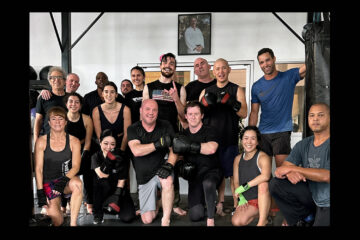As someone who trains with us at Krav Maga Worldwide, you’ve probably seen an injury or two. Once you step out onto the mat, lift that weight, or begin your exercise regimen, there is a risk that you may overwork yourself. Sometimes, even the wear and tear you put on your body during training simply adds up, and the excessive stress on your muscles and tendons can lead to an injury. Since athletes encounter injuries all the time, they must find ways to train with an injury, or risk losing their progress so far.

Common Sports Injuries
There are some Krav Maga training injuries that are more common than others, and because they occur so often, we are usually skilled in dealing with them. Here are eight of the most prevalent Krav Maga-related traumas:
ACL Strain
The ACL ligament runs between your femur, or thighbone, and tibia, or shin bone, right behind the knee. A strain usually occurs due to a sudden deceleration, such as coming to quick stop and pivoting in another direction. Another cause is pivoting the knee in place or hyperextending it.
Ankle Sprain
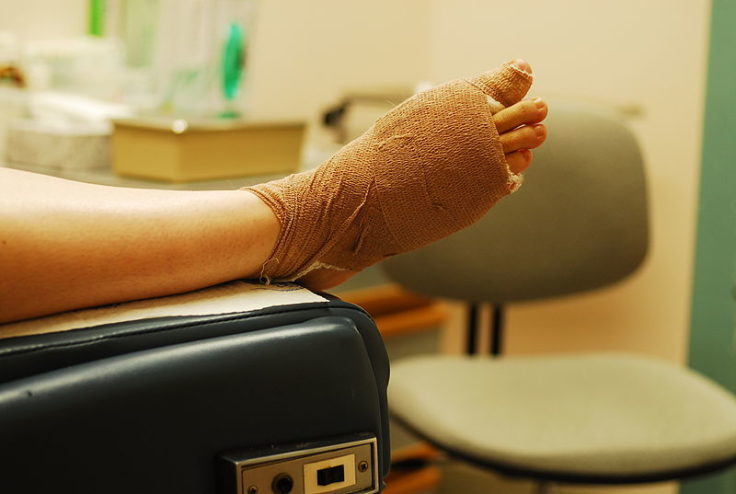
This is an injury to the ligaments or other soft tissues of the ankle. It occurs when the ankle turns inward during physical activity and twists itself. It is usually the result of planting your foot in the wrong spot coming down from a jump or losing your footing while running.
Hamstring Pull
Injuries to the hamstring occur when the muscles are stretched too far. They can vary in intensity from Grade 1 injuries, or muscle pulls, to complete hamstring tears, categorized as Grade 3 injuries. Krav Maga puts a great deal of stress on the legs, requiring bouts of running, jumping, or kicking, and places participants at risk of damaging their hamstrings if they aren’t warmed up properly.
Plantar Fasciitis
These Krav Maga training injuries are the result of repeated stress on the feet. Plantar fasciitis can happen when the tendon that runs along the foot's arch strains and becomes tight and less pliable than normal.
Quad Strain
This injury to the quadricep muscles happens due to the muscle imbalance between the hips and the foot area. Overuse and overstretching are usually the culprits, although putting too much stress on the muscle before it is ready is also a common cause. Quad strain may only cause some mild discomfort, but it can also be severe enough to require the use of crutches.
Hip Bursitis
This condition is common in older people, but can also occur in younger, active individuals with the same frequency. The injury refers to a “bursa,” or a fluid-filled sack that enables motion between two uneven surfaces. This sack can become inflamed, causing upper thigh pain and making it difficult to move efficiently. It occurs mostly due to overuse, though trauma to the immediate area is also a known cause.
Tennis Elbow / Elbow Pain
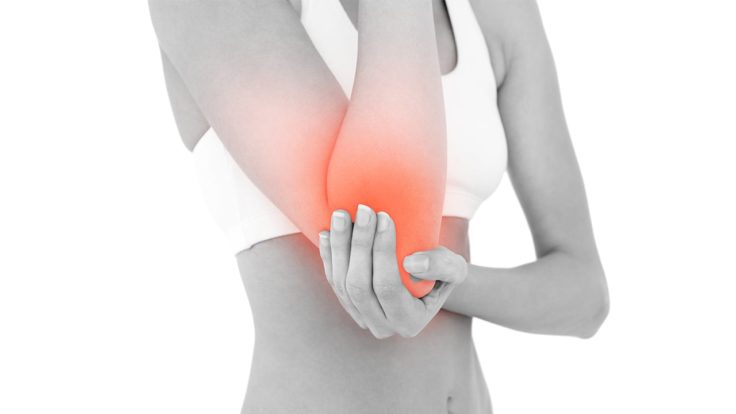
This injury is brought on by overuse of the hand, arm, and forearm muscles. The condition refers to the overextension of the tendon and muscle area around the elbow. It got its name due to the influx of afflicted tennis players that acquired the injury due to a poor backhand technique, but any athlete can affect the same muscles and bring about this condition.
Lower Back Pain
Almost all people have dealt with this affliction to some degree, whether they are athletic or not. There are a wide range of causes for it, from sleeping awkwardly to exercise or sports-related trauma, such as improper lifting. The pain can be mild and tolerable or become outright debilitating.
Best Practices for Training with an Injury
There are several ways to work around an injury in order to continue training effectively. Here are some pointers to allow you to keep up your fitness training and work around any problem areas:
Stop All Exercise Immediately

Do not attempt to “test” an injured site to see what it can do prior to speaking with a professional. You may damage the area further. You should continue to train with an injury only after you’ve consulted a doctor or physician.
Write Down Your Symptoms
Keeping a detailed account of the traumatizing event can help your physician to diagnose and treat your ailment later.
See an Appropriate Doctor
It is best to skip the physiotherapist and general practitioner and go right to the proper source. Seeing a sports specialist can help you get to the heart of the matter quickly and efficiently, without wasting time looking around for an accurate diagnosis. You may even find that one of your Krav Maga instructors has the training and experience necessary to diagnose you! While it is good to conduct your own research, never trust Google over a professional!
Concentrate On What You Can Do
Your doctor should make you aware of your limitations. If you sustained a foot injury, they may tell you not to run for six weeks and not to let your foot bear weight. Focusing on what you cannot do is depressing, and certainly does not give you the motivation to continue training with an injury, so ask your doctor what you can do. Focus on these exercises to get your healing started in the right direction.
Tell Your Coach or Trainer



A good coach will not think any less of you because you have to nurse an injured area of your body. Letting them know should not embarrass you in any way, and it ensures your coach develops a new approach to train around the injury.
Make a Plan
No matter what your training goals are, you will need a new plan that includes recovery. First of all, getting stronger and recovering from trauma requires confidence in your abilities. Training with an injury can only be developed through a structured program of consistent activity that allows you to see your progress.
Regain Your Confidence
Getting back to your pre-injury training can be tough, and you may feel disappointed that you can't just pick up where you left off. In order to regain your confidence, sometimes just showing yourself that you can still do simple things well can do the trick while training with an injury .
If you are weight training, it may be better to do some push-ups instead of attempting to bench press with a barbell or chest pressing with dumbbells. Once you get your confidence in your range of motion back on track, you can start lifting heavier. You have to be mentally prepared to get back to physically exerting yourself.
Try Physical Therapy
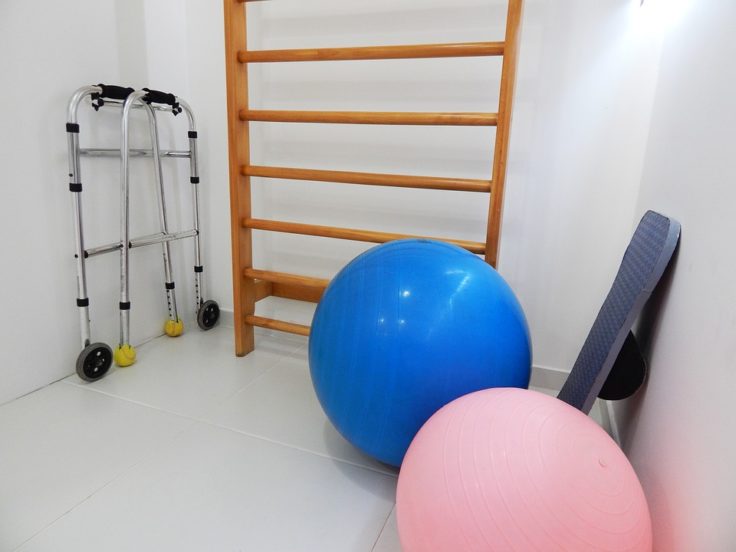
Work with your physician to book a few physical therapy sessions with a trained sports therapist. While they will not push you as hard as you work in Krav Maga class, they will complete exercises with you that allow you to keep training with an injury. You never want to test your full range of motion in the gym alone, where you can re-injure yourself or disrupt the healing process.
Focus On Nutrition
It is best to work with your body's natural systems and cut inflammatory foods from your diet while healing. Wheat, including the wheat that is hidden in hamburger meat and gravy, and refined sugars add to the inflammation that your body has already produced due to your injury. While a little inflammation is good because it signals your body to repair the damaged area, introducing additional inflammation can slow the healing process.
Consider Alternate Tools
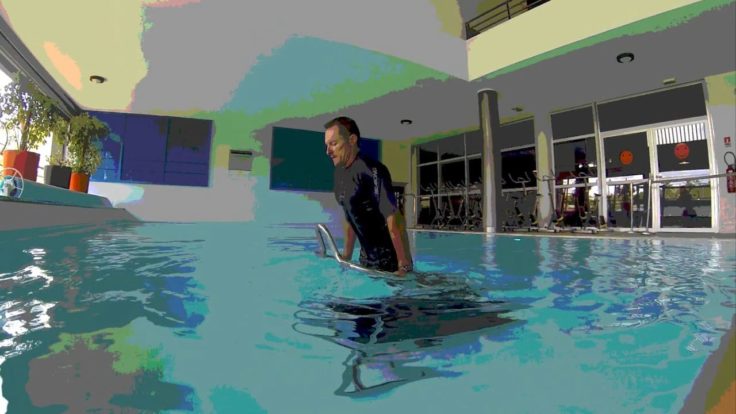
Sometimes tools like isometrics, electrical nerve stimulation, and aqua jogging help create muscle contractions, yet they do not load the injured area like a workout would. Performing the same motions you would in Krav Maga, without bearing the weight, allows you to keep training with an injury.
Take Healing Supplements
There are many supplements on the market that promote healing. Lactoferrin and colostrum aid in fast body restoration. Curcumin and arnica work to alleviate pain and lessen inflammation. You can easily research which supplements can help your body recover from your specific injury.
Exercise the Uninjured Body Parts
If you injured your left arm, try working specifically with the right arm to keep training with an injury. There have been a number of recent studies that show that the growth of one arm or leg is mirrored in the other unused arm or leg. There may not be significant change, but the body is designed to attain balance, and this form of training will reduce the incidence of atrophy.
Try the Linear Training Approach
When re-establishing your strength after an injury, a linear program is best, as training with an injury requires excellent technique and confidence in your abilities. In weight training, add a bit of weight to the bar at every workout. If biking, add a bit of speed or distance at every practice. This approach will build the consistency and momentum you need to get back to your personal best.
Consider Target Training
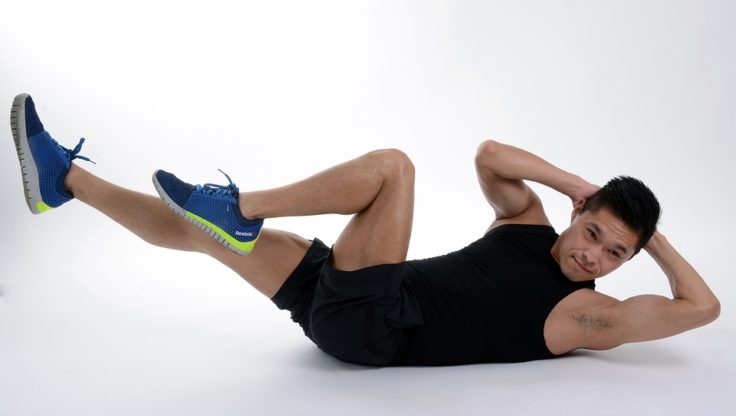
Sometimes you can use your workout to decrease healing time and increase the mobility of injured body parts. If you suffer from lower back pain, try contracting your core to increase intra-abdominal pressure, decreasing the pressure on the problem area. If you have tendonitis in the elbows and shoulders, vary your workout, rather than performing the same exercises over and over.
Try High Intensity Intervals
If you can't move a specific limb, just do whatever you can to keep your heart pumping strong. The blood's ability to carry oxygen is a vital component of fitness and every bit as important as building strength. This is measured by your red blood cell count and it can be increased by high intensity, anaerobic intervals.
Krav Maga Training with an Injury
For many people at Krav Maga Worldwide, their sessions with us are the only workouts they attend. If you’re dedicated to your Krav Maga workout and you’re unwilling to go without a class, even while injured, take precautions to minimize the risk of reinjury or a worse injury.
Krav Maga Techniques for Injured Participants
Many Krav Maga schools believe that any self defense training should be scaled to meet the needs of the person in training. Whether they are injured or even disabled, anyone should be able to meet the basic levels of competency within their own physical limitations.
While dealing with serious Krav Maga training injuries, a student may not be able to safely master the whole breadth of the discipline, but a highly trained instructor can usually make an accurate assessment of which movements and training are safe, depending on the injury, to allow a student to keep training with an injury.
Discuss Your Condition with Your Instructor



Once you come back to class, talk to the instructor and explain your concerns to them. The teacher may even offer you private sessions tailored to work around your issues. Once your instructor is armed with this information, they should be equipped to provide you with the best strategies and options for self-defense and strength training. Remember, the instructor does not want you to risk further Krav Maga training injuries, so most are willing to work closely with a recovering participant.
A Powerful Tool
Krav Maga is a powerful tool, and it is not just about building physical strength, it is also about forming mental agility and character. Focusing on physical limitations takes away from the core teachings of the practice.
Training with an injury can be tough, but if you listen to your body and work with dedicated professionals, you should be able to get back into the swing of things with ease. If you’re ever injured or you’re working through an injury right now, follow these tips on training with an injury to keep your workout regimen intact, recover faster, and get stronger.


